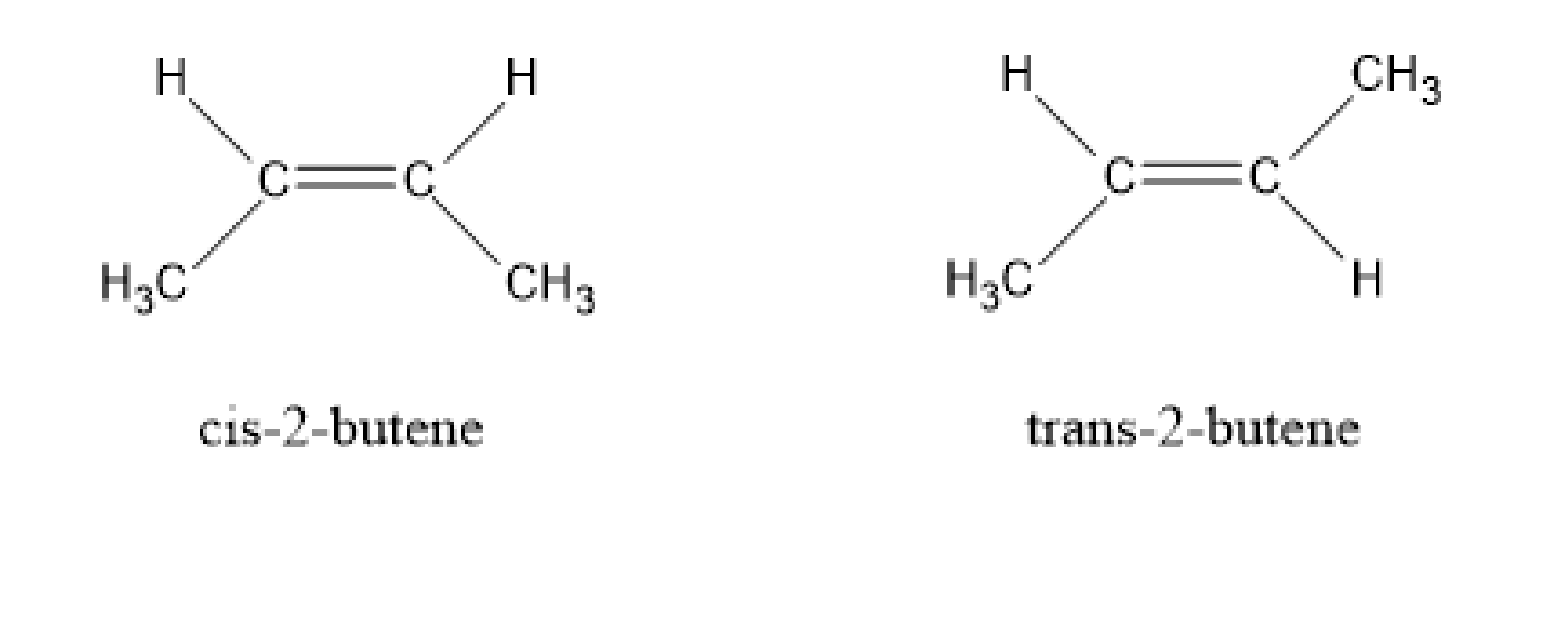
One mole of each of the following alkenes is catalytically hydrogenated. The quantity of heat evolved will be the lowest in the case of
A) 1-butene
B) Trans-2-butene
C) Cis-2-butene
D) 1,3-butadiene
Answer
221.1k+ views
Hint: The hydrogenation reaction defines the reaction of molecular hydrogen with an alkene in presence of catalysts like nickel, palladium, etc. Here, we have to compare the heat released in the hydrogenation of the given alkenes.
Complete Step by Step Answer:
Let's understand what the heat of hydrogenation is. This is the quantity of heat that evolved in a hydrogenation reaction. The stability of the alkenes has an impact on the release of heat. The more the alkene's stability, the less the amount of heat released.
Now, look at the options. Here, we have to find symmetrical molecules because they are highly stable.
1-butene is not a symmetrical alkene. So, it has a high heat of hydrogenation. So, option A is wrong.
1,3-butadiene is also not a symmetrical alkene. So, option D is also wrong.
Now, the remaining alkenes are symmetrical alkenes. They are, trans-2-butene and cis-2-butene.

Image: cis-2-butene and trans-2-butene
As we find that, both these alkenes are symmetrical. Now, we have to compare the heat released in the hydrogenation of these two alkenes. The stability of trans-2-butene is more than cis-2-butene because, in the former, the methyl groups are at the distant positions but in the latter, the methyl groups are in the crowded position that causes steric repulsion. So, the heat of hydrogenation is the least in the case of trans-2-butene.
Hence, option B is right.
Note: It is to be noted that, the direct conversion of an alkene to alkane happens by the addition of hydrogen in presence of catalysts like nickel. The hydrogenation of alkynes can be done by using Lindlar's catalyst.
Complete Step by Step Answer:
Let's understand what the heat of hydrogenation is. This is the quantity of heat that evolved in a hydrogenation reaction. The stability of the alkenes has an impact on the release of heat. The more the alkene's stability, the less the amount of heat released.
Now, look at the options. Here, we have to find symmetrical molecules because they are highly stable.
1-butene is not a symmetrical alkene. So, it has a high heat of hydrogenation. So, option A is wrong.
1,3-butadiene is also not a symmetrical alkene. So, option D is also wrong.
Now, the remaining alkenes are symmetrical alkenes. They are, trans-2-butene and cis-2-butene.

Image: cis-2-butene and trans-2-butene
As we find that, both these alkenes are symmetrical. Now, we have to compare the heat released in the hydrogenation of these two alkenes. The stability of trans-2-butene is more than cis-2-butene because, in the former, the methyl groups are at the distant positions but in the latter, the methyl groups are in the crowded position that causes steric repulsion. So, the heat of hydrogenation is the least in the case of trans-2-butene.
Hence, option B is right.
Note: It is to be noted that, the direct conversion of an alkene to alkane happens by the addition of hydrogen in presence of catalysts like nickel. The hydrogenation of alkynes can be done by using Lindlar's catalyst.
Recently Updated Pages
Difference Between Alcohol and Phenol: Structure, Tests & Uses

Classification of Drugs in Chemistry: Types, Examples & Exam Guide

Class 12 Chemistry Mock Test Series for JEE Main – Free Online Practice

Is PPh3 a strong ligand class 12 chemistry JEE_Main

Full name of DDT is A 111trichloro22bispchlorophenyl class 12 chemistry JEE_Main

Sodium acetate on heating with soda lime produce A class 12 chemistry JEE_Main

Trending doubts
JEE Main 2026: Application Form Open, Exam Dates, Syllabus, Eligibility & Question Papers

Derivation of Equation of Trajectory Explained for Students

Hybridisation in Chemistry – Concept, Types & Applications

Understanding the Angle of Deviation in a Prism

How to Convert a Galvanometer into an Ammeter or Voltmeter

Degree of Dissociation: Meaning, Formula, Calculation & Uses

Other Pages
Solutions Class 12 Chemistry Chapter 1 CBSE Notes - 2025-26

NCERT Solutions For Class 12 Chemistry Chapter 1 Solutions - 2025-26

The D and F Block Elements Class 12 Chemistry Chapter 4 CBSE Notes - 2025-26

NCERT Solutions for Class 12 Chemistry Chapter Chapter 7 Alcohol Phenol and Ether

NCERT Solutions ForClass 12 Chemistry Chapter Chapter 8 Aldehydes Ketones And Carboxylic Acids

JEE Advanced Marks vs Ranks 2025: Understanding Category-wise Qualifying Marks and Previous Year Cut-offs




